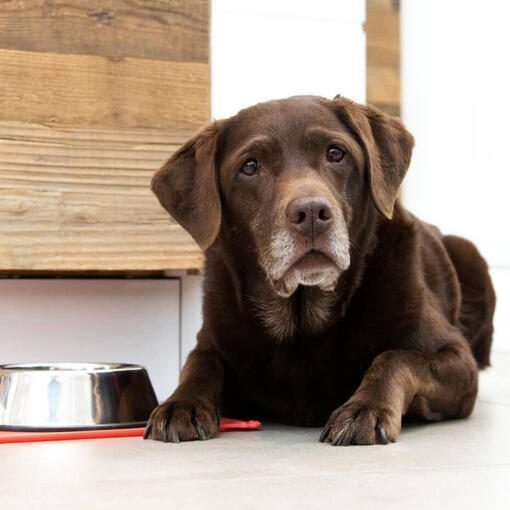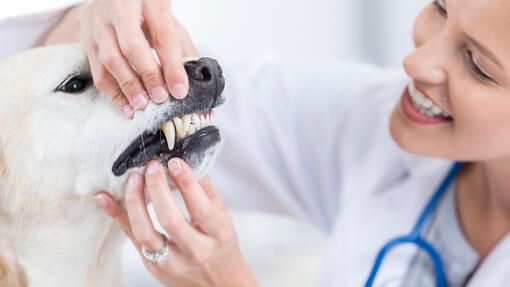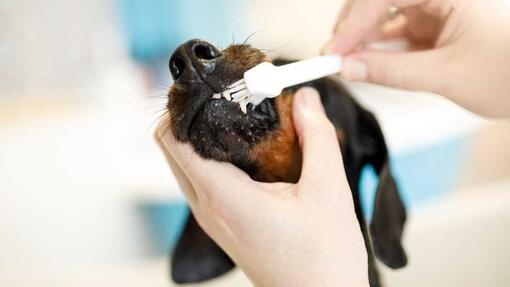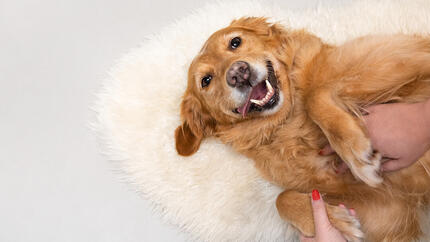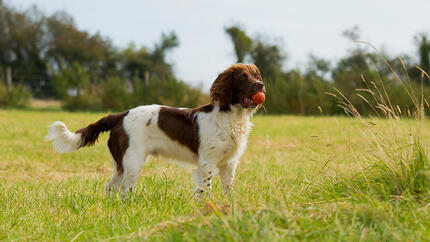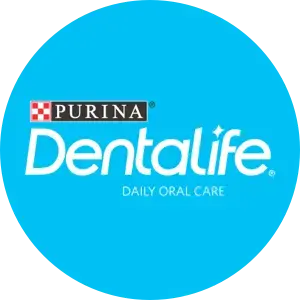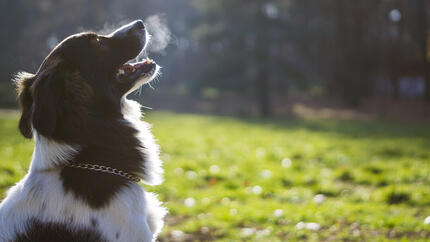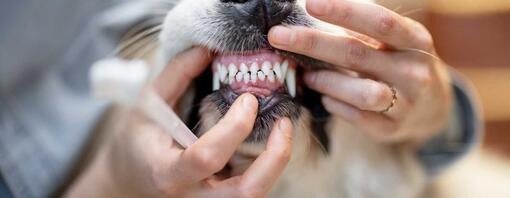
As a dog parent, it may not ever cross your mind to think about whether or not they lose their teeth. However, dogs can lose their teeth, and sometimes this can be a cause for concern.
Carry on reading to find out everything you need to know about dog teeth, what to do when they fall out and more.
Do dogs lose their teeth?
Yes. Like their human counterparts, puppies grow a set of baby teeth, which eventually fall out. Baby teeth are pointed and sharp, known by many owners as ‘needle teeth’. Losing these baby teeth is a normal part of puppy development, however, if adult dogs lose teeth, it can be a cause for concern.
Find out more about puppy teething here, including when the teething process starts and what to expect.
Senior dog tooth fell out. What should you do?
If your older dog has just lost a tooth, make sure you call your vet for an appointment. Although not essential, bringing the tooth with you will help your vet determine if the tooth is complete, or if there may be some root remaining under the gum. This is more common if the tooth loss is related to trauma to the mouth. Other reasons for tooth loss, include conditions like periodontal disease.
Look out for any other unusual signs as well. This will help your vet better understand what has led to the tooth falling out but also allow them to intervene quickly if there are any signs your dog is in pain.
Why is my older dog losing teeth?
If you noticed a few of your dog’s teeth missing, and it isn’t due to any dental extraction or injury, then it is likely that your dog is suffering from a canine dental disease.
Many gum diseases are caused by inflammation or infection of the gum tissue that surrounds the teeth. This can also affect the bone that surrounds the tooth’s root. This is termed periodontal disease and is one of the most common diseases in adult dogs.
What are the symptoms of missing teeth in dogs?
Often there are no obvious signs of missing teeth in dogs, and they may continue to behave as normal, even if their mouth is painful. However, here are some signs that they may show when they’re about to lose teeth or already missing some of them:
- Loss of appetite
- Drooling all of a sudden (or more than usual)
- Halitosis (bad breath)
- Pawing at mouth
- Difficulty eating
- Eating on one side of the mouth
Make sure you call your vet if you notice any of the symptoms above as they could point to conditions such as periodontal disease.
How can I help my older dog from losing more of its teeth?
If you notice your dog losing their teeth and they are also in pain and showing signs of distress, then you should seek advice from your vet immediately. Do not ever try to remove any loose teeth by yourself.
The vet will examine your dog’s mouth and from that will be able to make some recommendations on how to proceed.
If your dog has a large build-up of plaque or tartar, they may recommend that your dog has some dental work carried out under a general anaesthetic. They will clean your dog’s teeth, removing tartar with a descaling machine similar to the equipment used by a human dentist. This will help to improve your dog’s dental health and reduce the risk of further tooth loss.
What is the treatment for dogs losing their teeth?
All treatments depend on the cause behind your dog’s missing teeth. The vet will recommend the best solution for your furry friend. But these can include anything from teeth cleaning for mild cases of periodontal disease to canals canal treatment and a technique called root planning for more severe disease.
Can I prevent my dog from losing its teeth?
You can prevent your four-legged friend from losing their teeth by staying on top of dog oral care.
It is best to clean your dog’s teeth at least twice a week to remove the bacteria that leads to plaque build-up. It can be tricky to start brushing your dog’s teeth, especially if they are not used to it – which is why it is one of the many things that best introduced to puppies from early in their lives.
Make sure to introduce cleaning your dog’s teeth gradually, and always use vet-approved dog toothpaste and toothbrushes. Dog toothpaste comes in lots of enticing flavours such as chicken and beef to make mouthcare far more pleasant for your dog.
For many dogs, a toothbrush is a bit intimidating, so you can start off with rubber ‘fingers’ designed for dog toothcare, which just slip onto your finger like a long thimble and have rubber nobbles to clean teeth and massage gums.
You can start just by stroking this around the outside of your dog’s lips so they get used to the feel of it before starting to slowly build up to sliding it inside your dog’s lips with some tasty toothpaste on it. Once your dog gets used to this, you can progress to cleaning all of their teeth and even a toothbrush if that is easiest.
Do not use human brushes in your dog’s mouth, unless your vet has said it is OK to do so. You should also avoid using human toothpaste, as this is unpleasant tasting for dogs, and it can be harmful if swallowed. Toothpaste that has been formulated specifically for dogs also comes in flavours that dogs find far more appealing than the human versions.
You can also use give your dog dental chews such as Purina® DentaLife®. They have chewy, porous textures and ridged designs to help clean their teeth properly and freshen their breath.
Dogs losing their teeth can be a cause for concern. If you notice your dog showing any sign of discomfort in its mouth, or you notice some teeth missing, then you should contact your vet right away.
To help take care of your dog’s dental health, make sure they don’t start chewing anything hard, and ensure they get good daily oral care.
That’s our guide on whether dogs lose their teeth. If you want to learn more about dog teeth and what they look like, our dog dental chart is full of fascinating facts. Check it out next.


